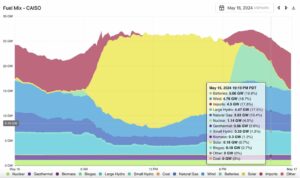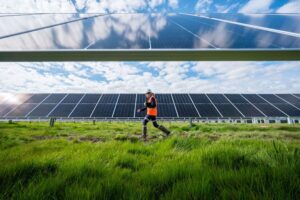- The Queensland state Labor government has announced a quadrupling of the storage capacity for a big battery planned for the coal centre of Stanwell, as it continues to ramp up its battery plans to support its renewable energy targets.
The government announced on Thursday that the Stanwell battery, to be built next to the existing coal fired power generators near Rockhampton, would be expanded from the originally announced two hour battery sized at 150 MW and 300 MWh, to a four hour battery sized at 300 MW and 1,200 MWh.
That will make it the biggest committed battery project in the state. It will be built by Tesla, using its Megapack technology, and the expansion will cost an additional $448.2 million, taking the total project cost to $747 million.
Construction of the Stanwell battery is scheduled to commence this month, and it is due to be operational in mid-2027. The project is part of a new clean energy hub planned for the site which will include green hydrogen, and a trial project using a innovative iron flow battery technology.
It is one of a number of big batteries being built in Queensland as the state seeks to ramp up the share of renewables in what remains the country’s most coal dependent grid.
The state has a legislated target of 80 per cent renewables by 2035, but currently has a share of just 27 per cent, although it is hosting many of the country’s biggest wind and solar projects which are mostly still under construction.
The Stanwell battery is one of a number being built by the state owned generators, with Stanwell Corp also building a 300 MW, 600 MWh battery next to the Tarong coal fired power station.
CS Energy recently completed the 100 MW, 200 MWh Chinchilla battery next to the Kogan coal fired power station and is also building the 200 MW, 400 MWh Greenbank battery south of Brisbane, and CleanCo is building the 250 MW, 500 MWh Swanbank battery next to that major fossil fuel generator.
There are two batteries operating in the state – at Wandoan and at Bouldercombe (pictured above) – with a number of others starting, including Akyasha Energy’s Brendale battery on the outskirts of Brisbane, and Neoen’s Western Downs battery next to the state’s biggest solar farm.
Genex Power, which owns the Bouldercombe battery, is also nearing building the 250 MW, eight hour Kidston pumped hydro project at the site of a disused open pit gold mine. It will be the first new pumped hydro project built in Australia for four decades.
See Renew Economy’s Big battery storage map of Australia for more information.
“By doubling the size of this battery, we’ll ensure that Central Queensland will have reliable, long lasting renewable energy for decades to come,” state energy minister Mick de Brenni said in a statement.
“This is the clean economy transition in action – not only does this mean cheaper, cleaner and more secure energy, but big battery projects like the Stanwell battery deliver a huge boost to jobs and economic growth to the local community.”
The state Labor government is heading to an election later this year where it is currently trailing the opposition LNP, and is making a point of highlighting the difference in energy policy between the two.
“We are delivering the big energy build for Queensland, that will go on to power our homes and energy intensive industries with cheaper, cleaner energy,” premier Stephen Miles said.
“Deloitte modelling shows that Queensland’s economy will be larger and better off for transforming to a clean energy economy faster and earlier.
“Queensland’s transformation to 80 per cent renewable energy by 2035 will unlock $270 billion in new investment and open up $430 billion in economy opportunity.”
Queensland announced a “battery blitz” in 2022 after the spectacular explosion that destroyed the Callide C generator and very nearly caused widespread blackouts across the state.
Stanwell CEO Michael O’Rourke said dispatchable energy assets such as the Stanwell BESS are essential to a successful transformation of our energy system, and the company aims to have 5 GW of energy storage operational by 2035.
“This large-scale battery can be charged by wind and solar during periods of peak renewable energy generation and discharged back into the grid during periods of high demand or to maintain grid stability,” he said in a statement.
Electrical Trades Uta applauded the state government’s commitment to public ownership of the state’s energy assets.
“This investment is good for workers, the climate and will bring downward pressure on the cost of living,” he said.
“This is in stark contrast to the LNP who threaten the transition with no commitment to public ownership, decent worker conditions, legislated renewable energy targets or funding commitments.”










